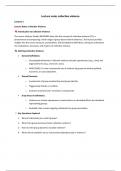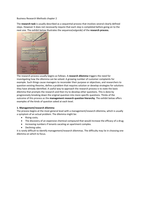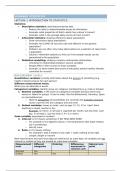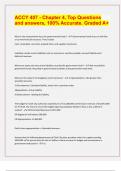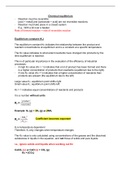The aim of this report is to demonstrate and assess the accuracy of acid base
titration using a pH meter, an indicator and an auto titrator and performing
complex calculations using pH. These calculations include rearranging equations,
assessing the action of a buffer solution. It will also show the selection of
indicators or titrators to get the pH of solutions and demonstrate a precise
reading of Ka and the action of buffer in a weak acid as well as assessing accurate
use of a pH meter in order to choose the suitable indicator.
Task 1: perform straightforward and complex calculations to find pH and
concentration of H+ ions and constant Ka for various acids and bases:
The importance of pH:
The fish, invertebrates and plants we keep in our aquariums come from
environments where pH is often specific to that habitat. Maintaining the right pH
in your aquarium is vital to them, but it is especially important if they were
collected in the wild. Furthermore, to require the correct pH and temperature
range, aquatic organisms need a stable environment. Sudden changes in pH can
be harmful, or even fatal, if the change is too drastic or occurs suddenly.
Strong acids:
1) A sample of HCl has a concentration of 1.22 x 10-3 moldm-3. what is the pH
value?
Hydrochloric acid (HCl):
HCl (aq) →(H+) (aq) + (Cl-) (aq)
[HCl(aq)] = 1.22 x 10-3 => [HCl(aq)] = [H+(aq)] = 1.22 x 10-3 moldm-3
=> pH = -log[H+(aq)] = -log (1.22 x 10-3 ) =2.91
2) a sample of nitric acid has a pH of 5.63. What is the concentration of this
sample?
Nitric acid (HNO3):
,HNO3 (aq) →(H+) (aq) + (NO3-) (aq)
pH= 5.63 => [H+(aq)] =[HNO3(aq)] =>[H+(aq)] = 10 -pH = 10-5.63 =2.34 x 10-6 moldm-3
Weak acids:
1) A sample of nitrous acid has a concentration of 0.055 moldm -3 ,Ka= 4.7 x 10-4
moldm-3 at 25C temperature. Calculate the pH value.
Nitrous acid (HNO2):
HNO2 (aq) ⇌ (H+) (aq) + (NO2-) (aq)
[HNO2(aq)] = 0.055 moldm-3 , Ka= 4.7 x 10-4 moldm-3 => [H+(aq)] = √ ❑Ka[HA(aq)] =
√❑(4.7 x 10-4 x 0.055) = 5.08 x 10-3 moldm-3 => pH = -log[H+(aq)] = -log (5.08 x 10-3 )
= 2.29
2) The pH of ethanoic acid is 2.47. calculate the value of Ka.
Ethanoic acid (CH3COOH):
CH3COOH (aq) ⇌ (H+) (aq) + (CH3COO-) (aq)
pH = 2.47 => weak acid => Ka = 10-pH = 10-2.47 = 3.38 x 10-3 moldm-3
Bases:
1) KOH has a concentration of 0.05 moldm-3. What is the pH?
Potassium hydroxide (KOH):
KOH (aq) →(K+) (aq) + (OH-) (aq)
KOH is strong base => [KOH(aq)] = [OH-(aq)] = 0.05 moldm -3
Kw= [H+(aq)][OH-(aq)] = 1 x 10-14 mol2dm-6 => [H+(aq)] =Kw/[OH-(aq)] = 1 x 10-14 /
0.05 = 2 x 10-13 moldm-3
pH = -log[H+(aq)] = -log(2 x 10-13 ) = 12.70
2) NaOH has a concentration of 3.56 x 10-2 moldm-3. What is the pH?
Sodium hydroxide (NaOH)
NaOH (aq) →(Na+) (aq) + (OH-) (aq)
, NaOH is a strong base => [NaOH(aq)] = [OH-(aq)] => Kw= [H+(aq)][OH-(aq)] = 1 x
10-14 mol2dm-6 =>[H+(aq)] = Kw/[OH-(aq)] = 1 x 10-.56 x 10-2 =2808.98 x 10-16
moldm-3
pH = -log[H+(aq)] = -log(2808.98 x 10-16 ) = 12.55
Buffer solutions:
1) Calculate the pH of a buffer containing 0.05 moldm-3 CH3COOH (aq) and 0.1
moldm-3 CH3COO-Na+ (aq). CH3COOH Ka= 1.7 x 10-5 moldm-3.
[H+(aq)] = Ka x [HA(aq)]/[A-(aq)] = 1.7 x 10-5 x 0.05/0.1 = 8.5 x 10-6 moldm-3
pH = -log[H+(aq)] = -log(8.5 x 10-6 ) = 5.07
2) a buffer solution contains 0.15 moldm-3 methanoic acid HCOOH (aq) and 0.065
moldm-3 sodium methanoate , HCOONa. Calculate the pH of this buffer solution.
HCOOH Ka= 1.6 x 10-4 moldm-3
[H+(aq)] = Ka x [HA(aq)]/[A-(aq)] = 1.6 x 10-4 x 0.15/0.065 = 3.69 x 10-4 moldm-3
pH = -log[H+(aq)] = -log(3.69 x 10-4 ) = 3.43
Task 2: determining the acid dissociation constant Ka for a weak acid:
Practical work:
Aim: The purpose of this practical is to pricisely demonstrate a reading of pH of a
half-neutralised solution of ethanoic acid and from this determine a value for Ka.
Equipment: ethanoic acid (0.1 mol), sodium hydroxide solution (0.1 mol), distilled
water, pH meter, pipette 25cm3 and pipette filler, 1burrett (50cm3) and stand,
beaker (250cm3), conical flask (250cm3), small funnel, safety spectales.
Methode:
1. Clamp the 50 cm3 burette to the stand. Using a funnel, rinse and fill the burette
with 0.1M sodium hydroxide solution.



